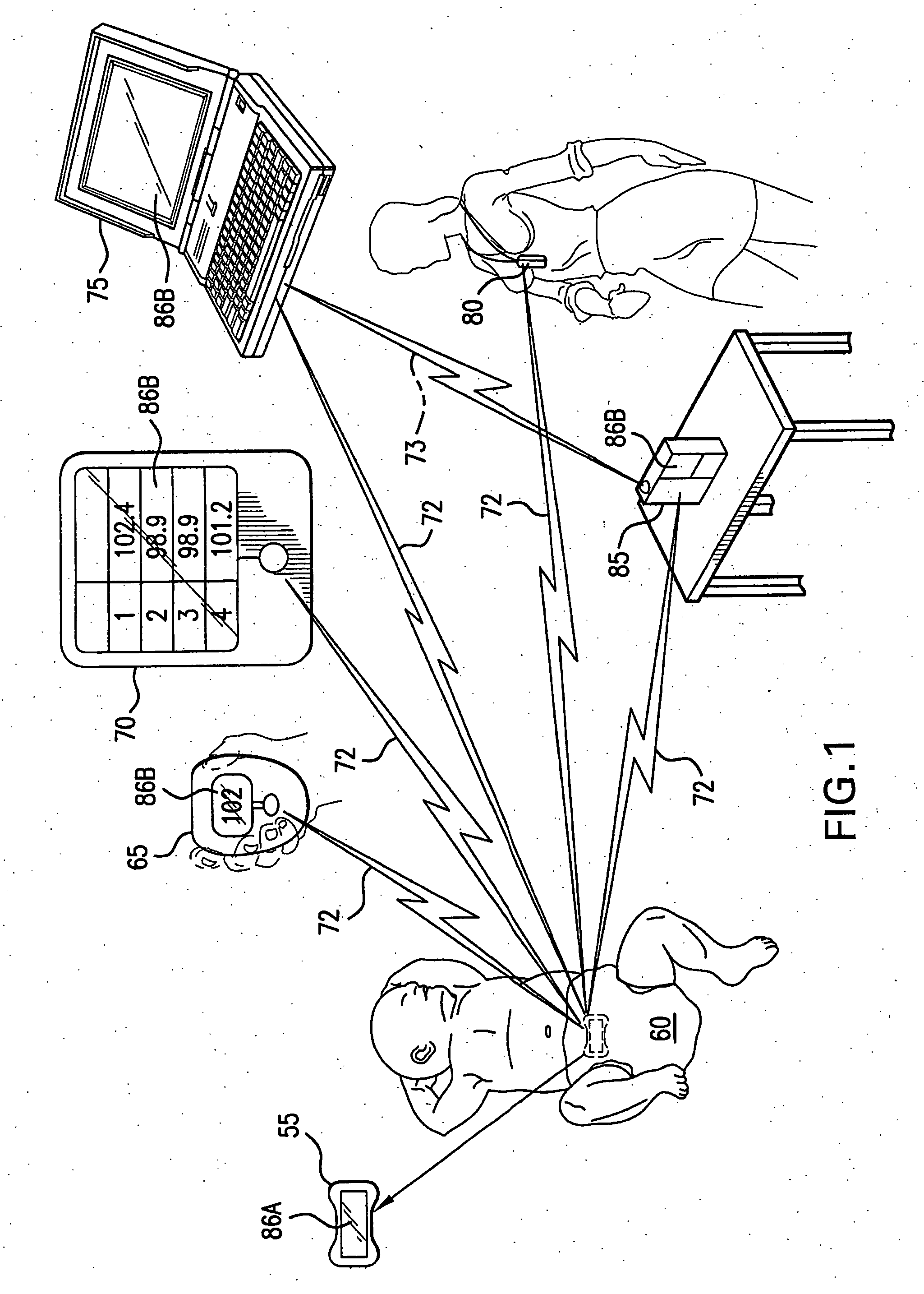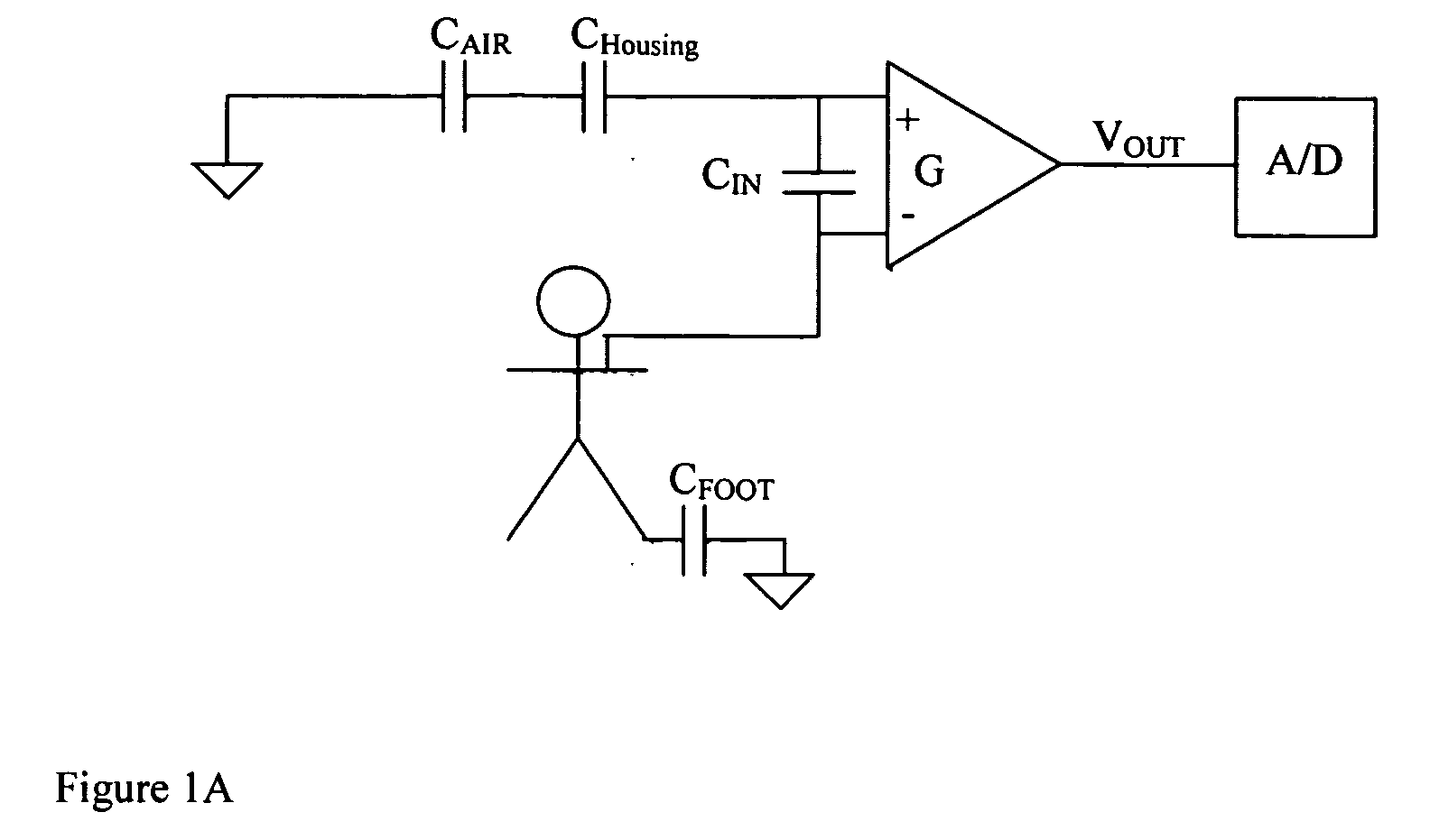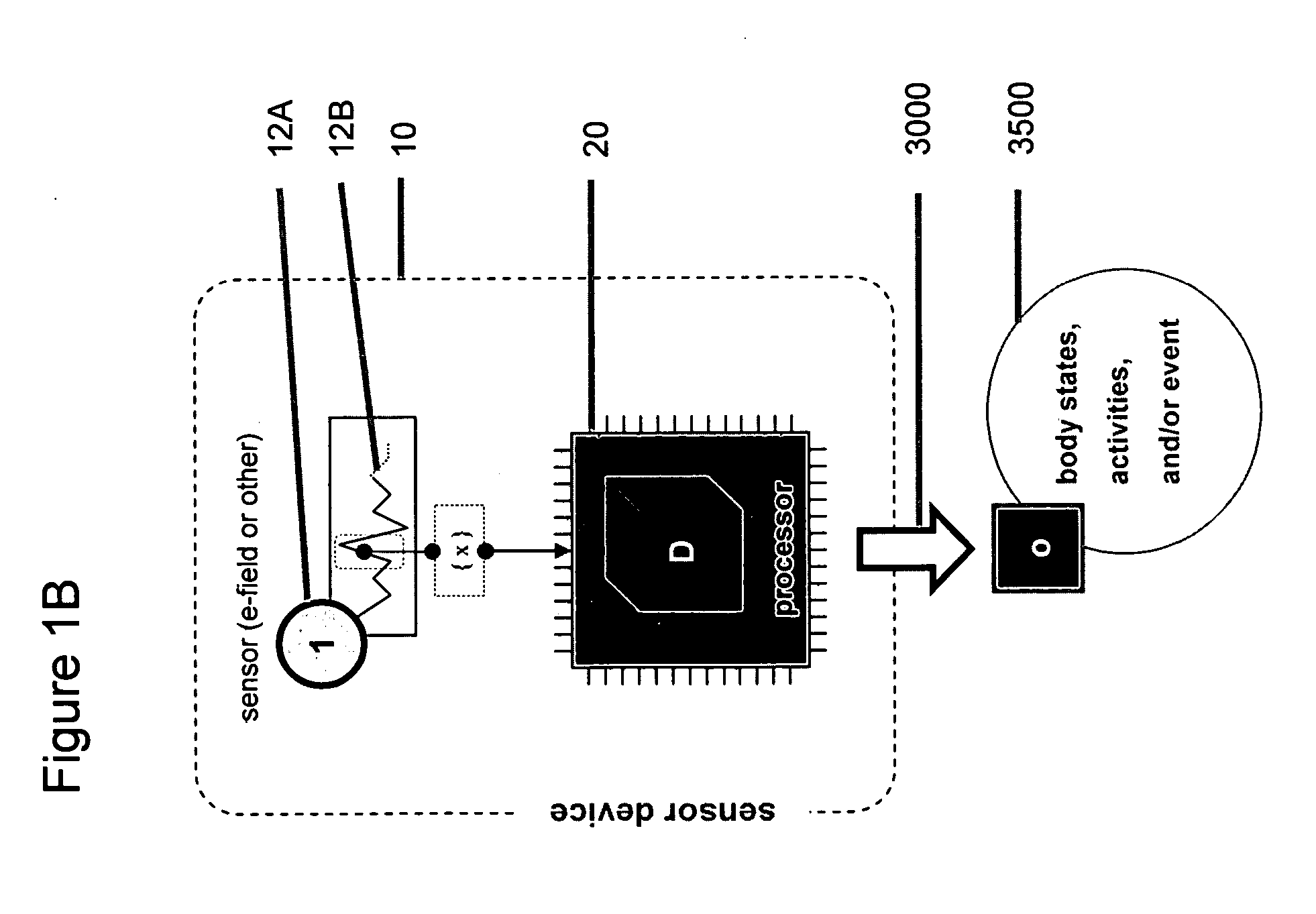Devices and systems for contextual and physiological-based detection, monitoring, reporting, entertainment, and control of other devices
a technology of contextual and physiological parameters and devices, applied in the field of devices and systems for contextual and physiological parameters detection, monitoring, reporting, entertainment, and control of other devices, can solve the problems of high cost of additional sensors, large amount of power consumption, and failure to disclose devices capable of deriving physiological and contextual parameters. , to achieve the effect of low cos
- Summary
- Abstract
- Description
- Claims
- Application Information
AI Technical Summary
Benefits of technology
Problems solved by technology
Method used
Image
Examples
first embodiment
[0115] Indeed, through testing, Applicants have shown various parameters each have a signal signature, wherein the signal is generated from an electric-field sensor. Thus, the invention comprises devices and methods for utilizing electric-field data to determine physiological parameters, contextual parameters, activities, event, or body states of a user. FIG. 1B schematically depicts such a device. Many of the aspects of this schematic representation overlap with the schematic representation of the device as shown in FIG. 1. The general scheme employed in FIG. 1 is applicable to the description immediately below. Nevertheless, the particular schematic will be discussed to further clarify an embodiment of one such apparatus. The apparatus comprises a sensing device 10 having an electric-field sensor 12A of the type described above. The electric-field sensor 12A could be a sensor in any of the sensor devices or modules disclosed herein but need not necessarily configured as such. The ...
second embodiment
[0169]FIG. 5C illustrates module 55 which is an elongated module 130. As previously described with respect to FIGS. 5A and 5B, the housing components of module 130 are preferably constructed from a flexible urethane or an elastomeric material such as rubber or a rubber-silicone blend by a molding process, although the housing components may also be constructed from a rigid plastic material. Ambient temperature sensor 120 is located along a central portion of upper housing 95 of elongated module 130 and can be protected by sensor cover 115if necessary, as described with respect to FIG. 5A. Elongated module 130 further has a first wing portion 131 and a second wing portion 132. Wing portions 131, 132 are located opposite to each other on either side of sensor cover 115and can be of equal or varying lengths and widths depending on location of body being attached to requirements for adhesion and force against the body. Elongated module 130 may be adapted to conform to the size of an ind...
seventh embodiment
[0199]FIGS. 11A through 11G illustrate the present invention in the form of a folded clip module 495. FIG. 11A illustrates a folded clip module 495 having a first portion 510 and a second portion 515. FIGS. 11B and 11C illustrate one embodiment of folded clip module 495. In FIG. 11B, folded clip module 495 has a first portion 510 which is constructed from a durable material, preferably of flexible urethane or an elastomeric material such as rubber or a rubber-silicone blend by a molding process. Alternatively, first portion may be a rigid plastic. First portion 510 further has a circular face 520 on which display 86A is located. As with all displays disclosed herein, display 86A visually presents continuous detected physiological or contextual measurements and other relevant, statistical data including processed data such as current parametric data, data trends, and other derived 1 data.
[0200] First portion 510 of folded clip module 495 has a narrow extension piece 521 that connects...
PUM
 Login to View More
Login to View More Abstract
Description
Claims
Application Information
 Login to View More
Login to View More - R&D
- Intellectual Property
- Life Sciences
- Materials
- Tech Scout
- Unparalleled Data Quality
- Higher Quality Content
- 60% Fewer Hallucinations
Browse by: Latest US Patents, China's latest patents, Technical Efficacy Thesaurus, Application Domain, Technology Topic, Popular Technical Reports.
© 2025 PatSnap. All rights reserved.Legal|Privacy policy|Modern Slavery Act Transparency Statement|Sitemap|About US| Contact US: help@patsnap.com



